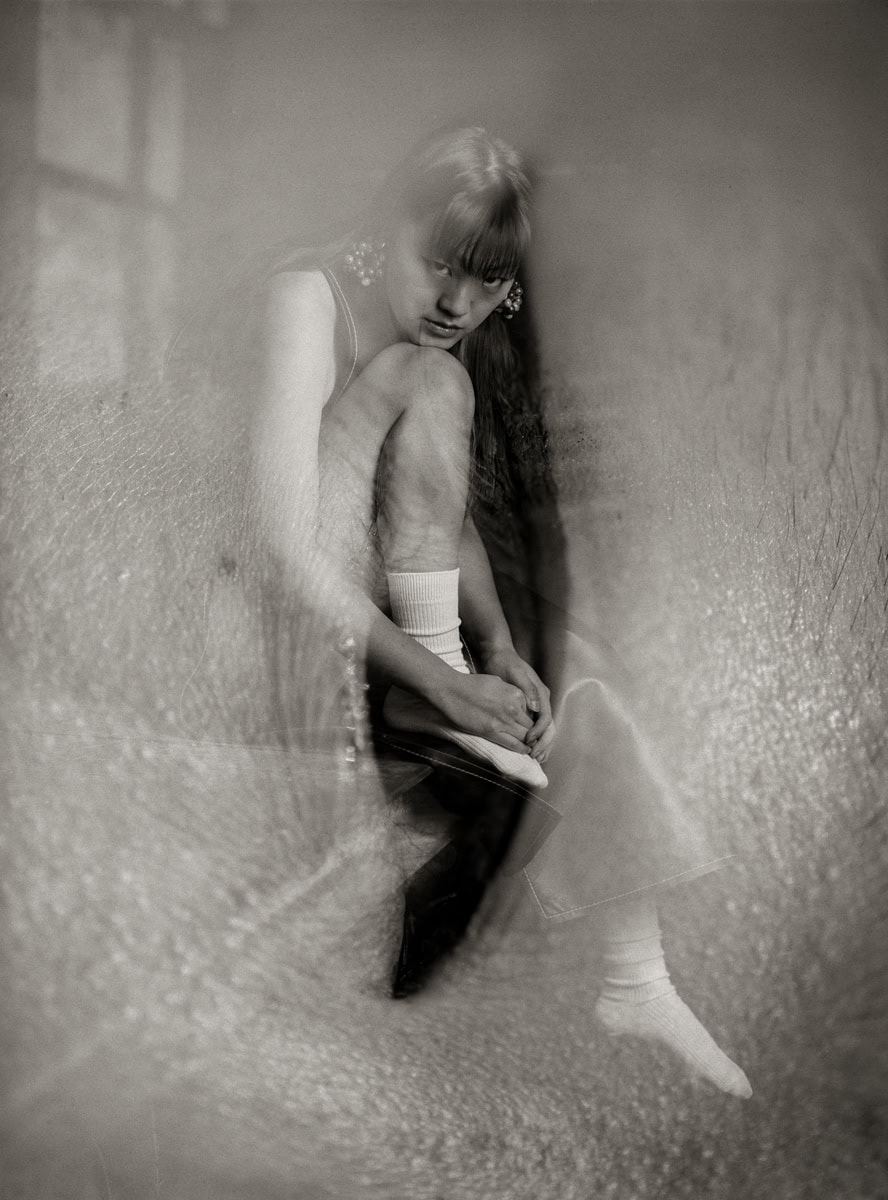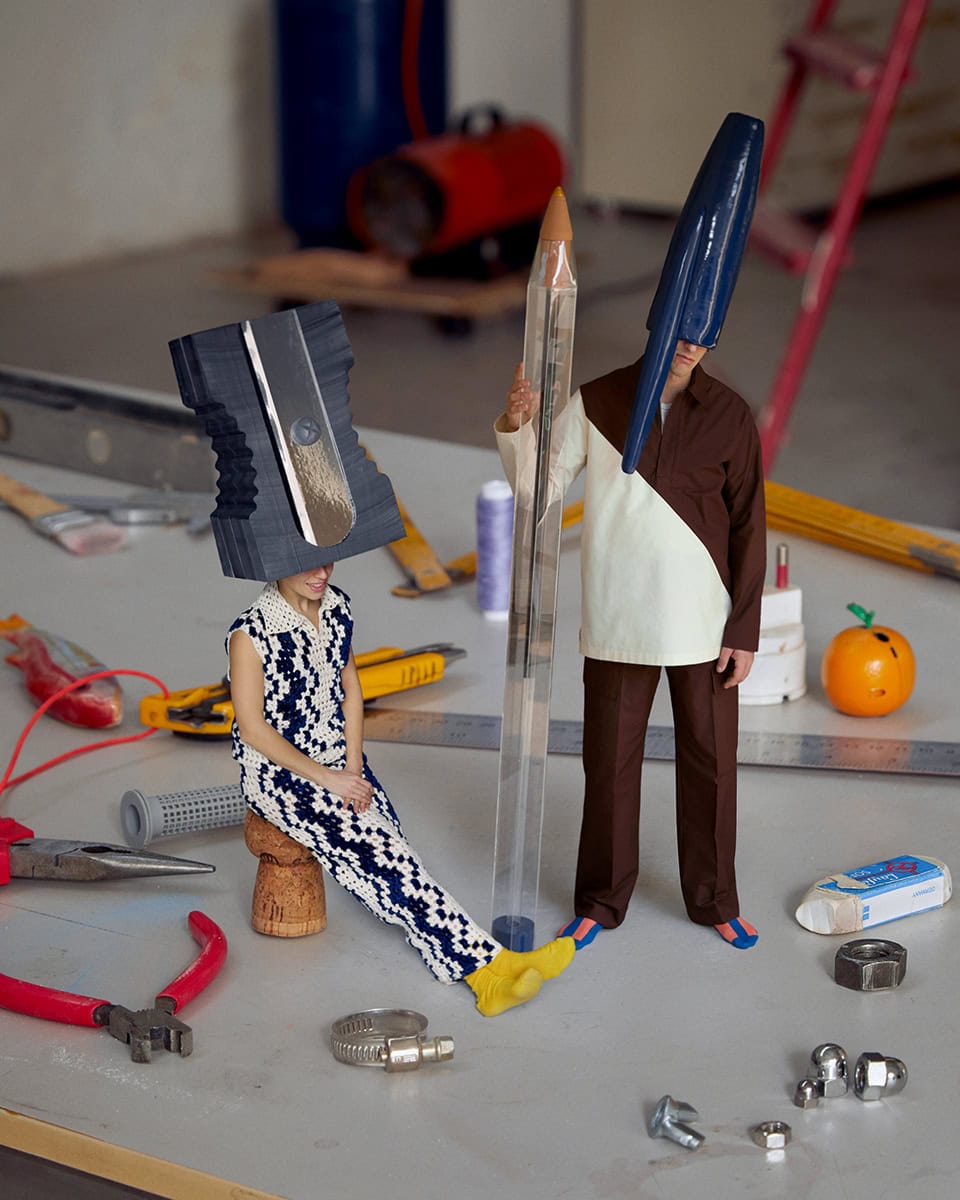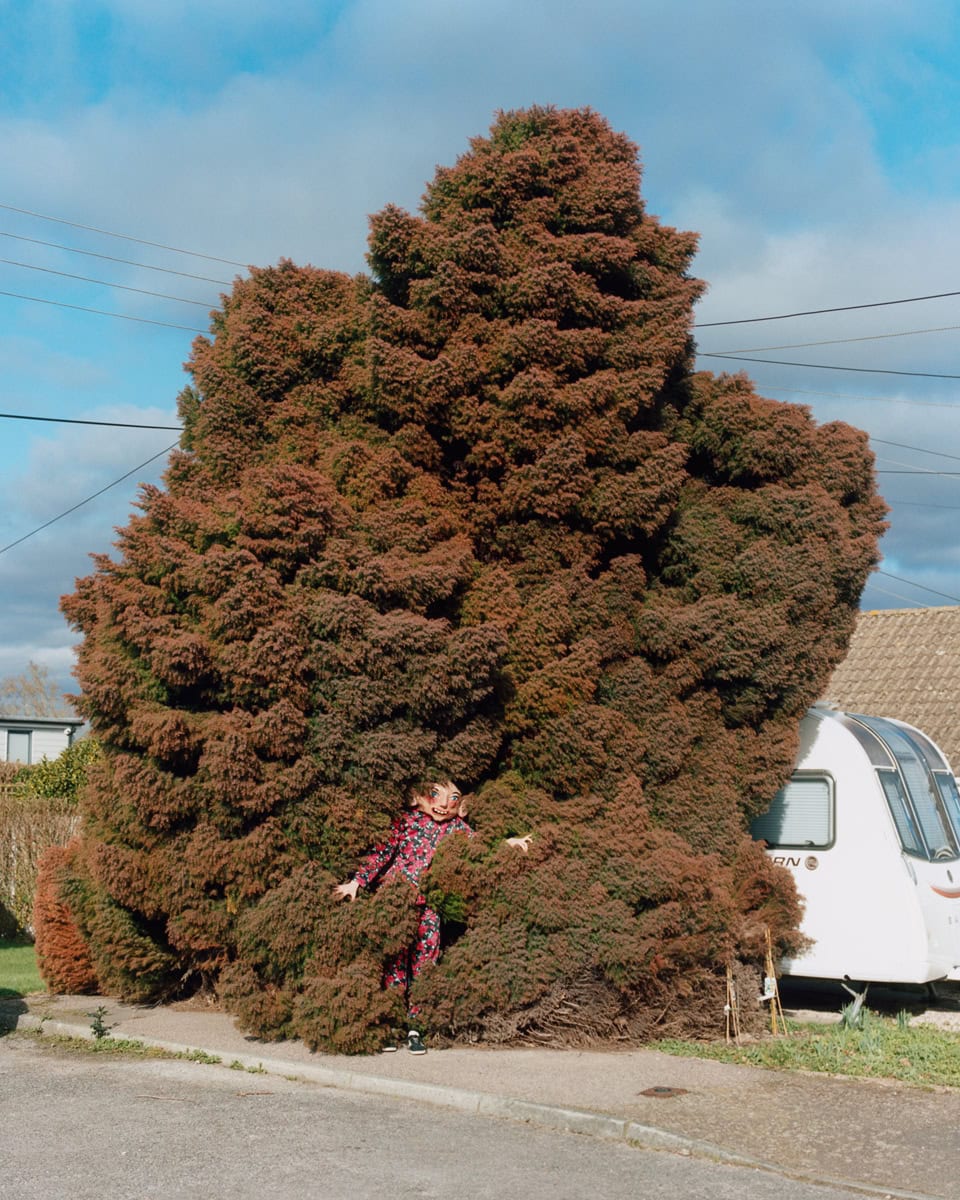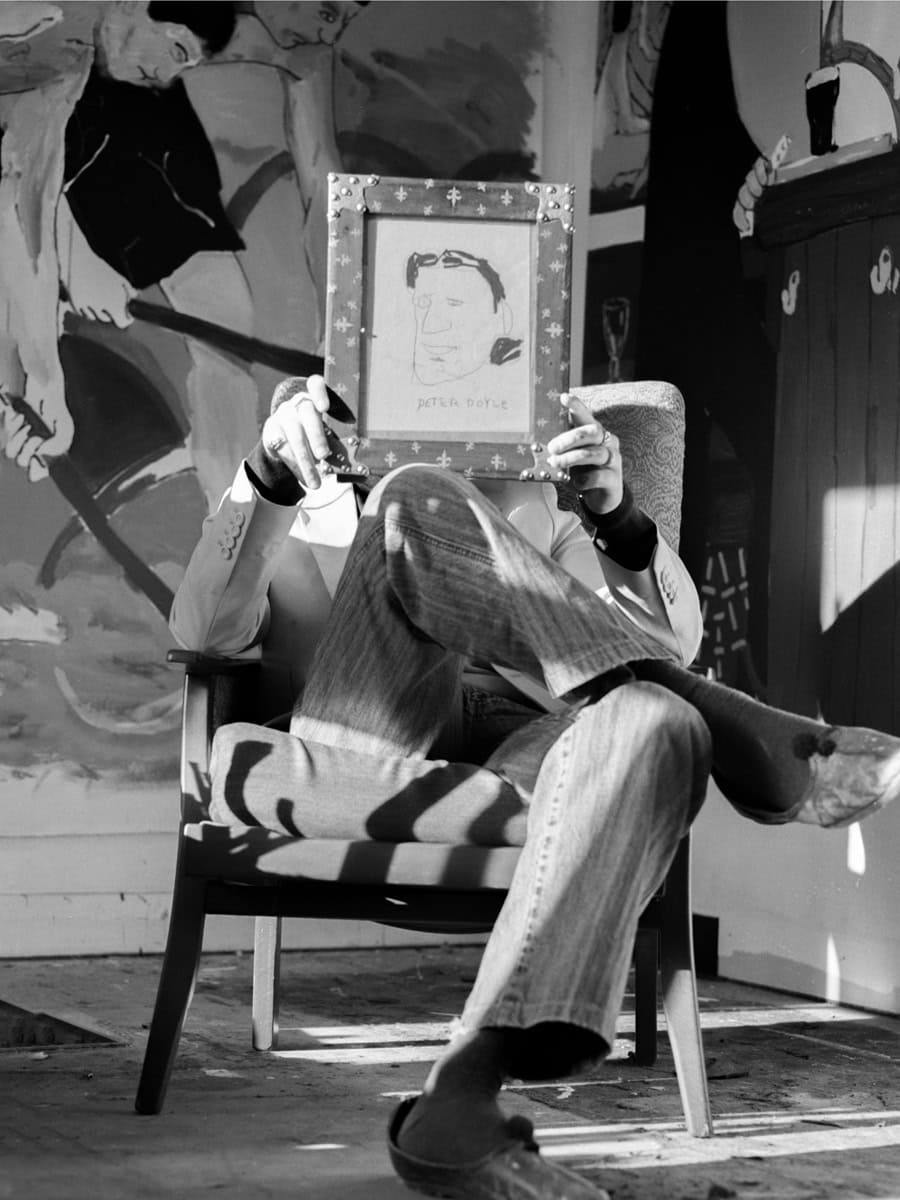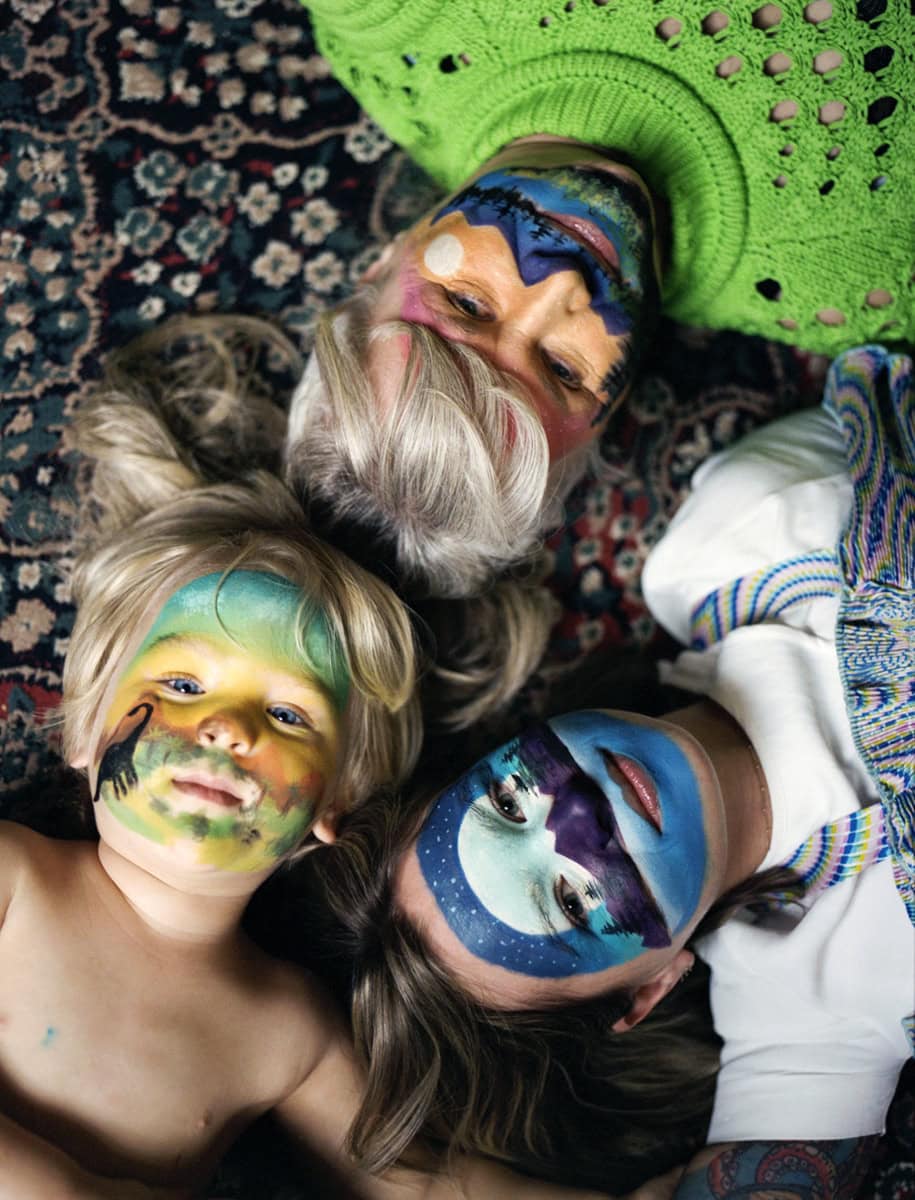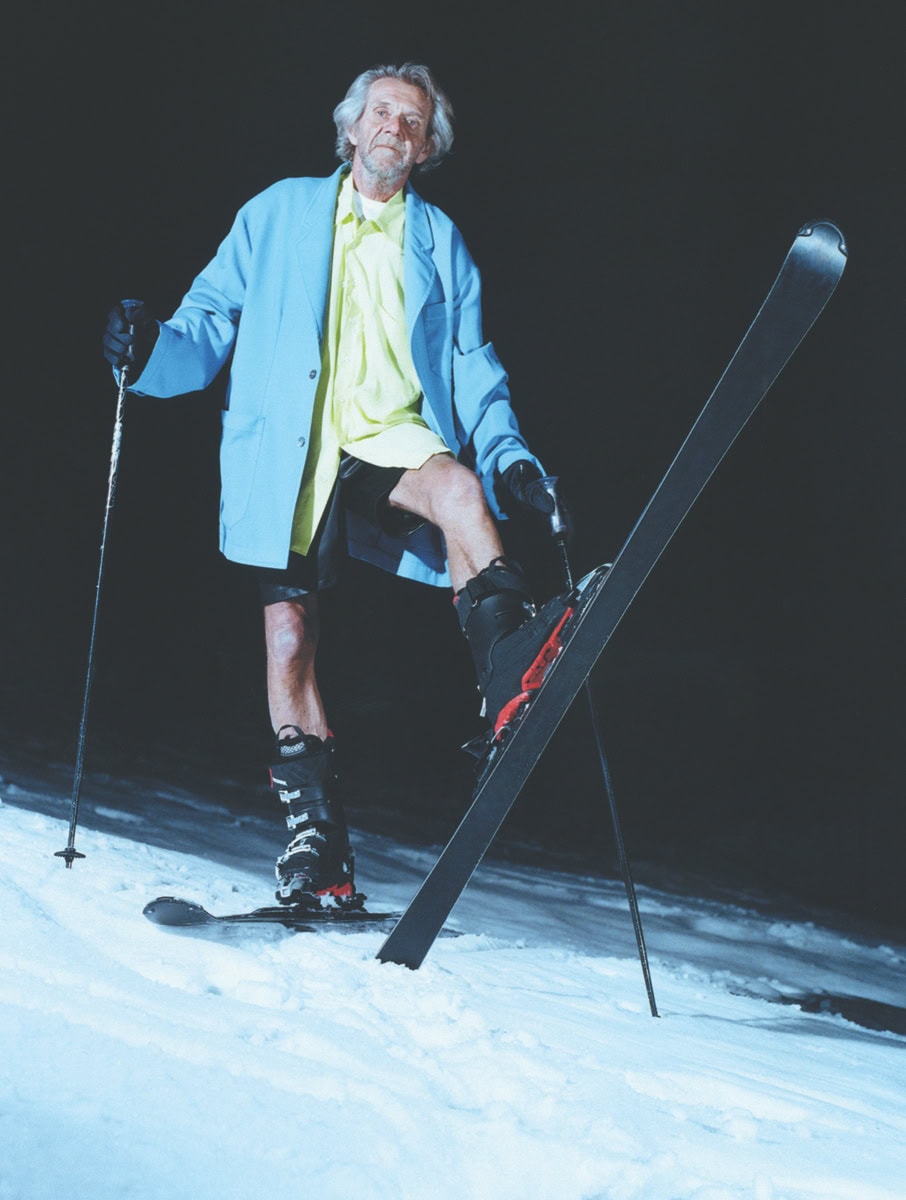As a child, I thought just closing my eyes would make everything disappear. I was convinced that if I couldn’t see anybody else, they couldn’t see me either. It was a little trick I used when things weren’t going my way. When the world was too much or too little.
Growing up, I discovered that I hadn’t invented anything special, listening to David Bowie sing: “If I close one eye, the people on that side can’t see me”. But maybe what I really wanted wasn’t so much to disappear but to hide, only to discover that somebody was looking for me.
It feels impossible to hide nowadays. Our life is constantly in the spotlight and feels more and more like a performance where you can’t get your lines wrong—a story to be broadcast to the world. This is the aut aut of social media: to exist, you have to be there. Those who choose to leave fall off the radar and radically reduce their field of action. It would seem, to all intents and purposes, a step backwards. But is there not something incomprehensible in every revolutionary gesture?
“Being invisible can be deadly,” states German artist Hito Steyerl, but “the situation that most people face is that they are being visible all the time. This is unfortunate because people might want to escape.” So is there a way to disappear? To really choose when and how to be present?
How Not to Be Seen: A Fucking Didactic Educational .MOV File provides us with a way out. It is a practical and metaphorical guide on how to escape the prying eyes of cameras, wherever they may be. Not to mention human eyes, which have less range but are often just as deadly. Needless to say, the green screen is of no use in real life so Hito proposes an alternative: “Pretend you’re not there.” She goes on to acknowledge that, “if you’re a woman over 50 in contemporary society, you are probably already wearing the cloak of invisibility.”
To be there or not to be there, then? It is a question as old as time, but today it takes on a much more complex meaning—especially when framed within this limited binomial. Divergent thinking is needed to find an answer; one that can discern the infinite grey and fickle gaze that lies between black and white. We must then add a good dose of courage to that thinking.
Bottega Veneta—2.5 million followers—disappeared from Instagram in early 2021. It did so quietly, as if by accident. But that fake mistake made more noise than any advertising campaign. It was what is known as a “strategy of absence”, and it is perhaps the most sophisticated way of being seen today. One year down the line and the brand has taken over the Great Wall of China and won the game once and for all, bringing it back to an entirely forgotten playing field. An unmistakable green stripe covers one of the Seven Wonders of The World, and we don’t need likes to know how valuable that is. Once again, Bottega Veneta remains silent. Everyone else is talking about it, despite not having anything left to say.
According to poet Peter Handke, “I live by what others do not know about me.” So, why stay? I have asked myself this countless times, well aware that I am not Bottega Veneta—and that nobody would ever know about anything I decided to stop sharing. However, I made the decision to stay specifically to avoid sharing everything. To find my own way of filtering a world which, the way it is right now, is often not enough for me. I publish stories that last less than 24 hours and wonder if in those brief moments I have touched someone’s heart. I hide behind words and images that speak about myriad other things, without realising that they reveal more than my own face. And in that mystery, I come to life.
I know many ways of hiding. But now I know that they are quite simply other ways of being.
WHO: Luwei (Luwei Wang)
WHAT: DJ/Video Director
WHERE: Milan, Italy (from Chengdu, China)
WHEN: 01/11/1991, age 30
WHY: (Why did you choose this kind of representation? What do filters mean to you? Are filters a way to reveal yourself?)
I chose this kind of representation because it’s indistinct and subtle, it also creates curiosity and expectation and a space for imagination. It’s for everyone to interpret in their own way.
Filters create a comfort zone for me to reveal my different sides. I can decide what I want people to focus on, what I’d like to show. It represents my perspective on aesthetic.
For me, the use of filters is certainly connected with social appearance anxiety. At times I have used filters to distort my physical appearance, choosing bigger eyes, fatter lips, smoother skin and that kind of filter, to create a version of myself that is more in line with standardised beauty. I broke free from that myth when I became more focused on my own creative journey with music and video. At that point I realised that I just needed to be myself, that I’m confident and comfortable with myself and I no longer need to fake being pretty or perfect because that doesn’t represent me anymore. But there are still tons of different filters that help me to express myself just the way I am.
WHO: Steiner&Wolińska (Weronika Wolińska, Romeo Steiner)
WHAT: Set Designers
WHERE: Milan, Italy (from Milan and Poznań, Poland)
WHEN: 17/08/1987, 09/04/1989, average age 33
WHY: (Why did you choose this kind of representation? What do filters mean to you? Are filters a way to reveal yourself?)
We choose to be represented as two little people on our workshop table with some of our objects, since we like being surrounded by instruments and materials. I think that we’re just at the beginning of our visual research which currently finds its output in these enlarged everyday objects. But for us, it’s mostly about the meaning and relationship between materials with an overall ironic twist.
So yes, I think this particular part of our filter is revealing, it’s a kind of guideline to understanding some of our choices. Irony adds a little doubt to every situation and reminds us of the impossibility of reaching absolute understanding. Irony also brings agreement and peace, shows respect for weakness, and makes things and actions less serious and heavy.
On the other hand, this filter might be a mask to prevent us from disclosing any harsh judgements we might have about the fashion and luxury industry that finances our projects.
WHO: Amelia Johnson
WHAT: Artist
WHERE: London/Kent, UK
WHEN: 18/12/1999, age 22
WHY: (Why did you choose this kind of representation? What do filters mean to you? Are filters a way to reveal yourself?)
From comic books to pandemics and ancient religious ceremonies, masks have always been a common occurrence. Typically masks have a range of roles in societies, such as protection, disguise, and entertainment; all of which are ways we filter and process certain areas of life’s expanses.
Carnivalesque, a term coined by Mikhail Bahktin, is a filter through which we can invert and commentate on our current social order. Carnivalesque denotes an idea, rather than a physical festival. However, concepts within the physicality of Carnival permeate through to the carnivalesque, which is defined by the canons of the grotesque body, eccentric behaviour, the reversal of hierarchies and the comic mask. Within my practice I have explored areas of the comic and the ideas that I identify with are woven into the carnivalesque.
I believe we cannot create work separately from the context in which we live and have therefore utilised satire in a way that engages social and political critique. I have employed the concept of the comic mask through wearable heads and masquerading as comical characters, which transpire more theatrically. Within my own practice, masks act as a filter through which I can reveal more difficult topics or emotions.
I am concerned with concepts such as humour, satire, and playfulness. By utilising the comic as a filter to address more serious issues within society, social critique is possible. In the spirit of the carnivalesque, we can quite literally mask more afflicting topics with the comic through the serio-comic, where the intention behind the work is serious but it is humorous in manner.
These pieces also interlink with the grotesque body and, characteristically, the parody of the anthropomorphic body is of particular interest to me. I enjoy the humour and tension one feels when witnessing the duality of something familiar yet bizarre. Employing the use of carnivalesque elements such as these has allowed me to identify ways in which we can use humour both as an act of playfulness but also as a way to filter social commentary and critique.
The comic, a subset of my own work, is a filter through which we can address topics that are unexamined in our day-to-day lives. Representing them physically through amusing and often absurd art makes enquiries into such subjects more palatable. It is the social body masquerading as real life.
Encrusting the mechanical onto the living incites laughter as the living transforms into a thing.
Such filters, as discussed above, are a way to reveal yourself. By drawing upon a disguise you make yourself more seen, more out of place, and more questions will be raised as to why you are disparate. What interests me is the tension that is revealed when we bend reality into a place of reverie, and how the elasticity of life bounces back through that. The automatism and inelasticity of a sculpted mask on an animated body brings the comic to life. Masks and carnivalesque elements incite comedy, and the comic becomes a filter through which we can begin to comprehend existence.
WHO: Peter Doyle
WHAT: Artist/Painter
WHERE: Living and working in London, UK
WHEN: 23/10/1992, age 29
WHY: (Why did you choose this kind of representation? What do filters mean to you? Are filters a way to reveal yourself?)
I choose to paint as a means of getting out what is around me. I paint people close to me with mixes of old photos and motifs or what I see around the city. The filter I use is familiarity. My friends and family are my favourite thing to paint.
WHO: Marie Bruce
WHAT: Make-up Artist
WHERE: London, UK
WHEN: 15/03/1989, age 32
WHY: (Why did you choose this kind of representation? What do filters mean to you? Are filters a way to reveal yourself?)
To me, a filter isn’t necessarily a way to reveal myself. I don’t think anyone can really ever truly reveal the self, as the self is ever changing. At present I feel peaceful; tomorrow I may feel frustrated and anxious. My use of make-up is usually related to memories. I’ve recently been thinking how every single thing we do, every action we take, is based upon past memories and experiences. I sometimes remember an image I’ve seen or a landscape I’ve experienced or a colour that made me pause, and that usually translates into a full face landscape. They’re never contrived or particularly meaningful but linked to my memories, which I like to document in make-up. I find landscapes fascinating; somewhere to get lost. Nature is wonderful, though I don’t necessarily enjoy being in it. I’m too fussy. I prefer to observe safely from my own comfortable setting.
WHO: Nicolas Haeni
WHAT: Photographer
WHERE: Switzerland (working in between Lausanne and Paris)
WHEN: 22/03/1984, age 38
WHY: (Why did you choose this kind of representation? What do filters mean to you? Are filters a way to reveal yourself?)
Thinking about my work, I have two kinds of filters. One is the use of everyday objects that I reclaim and another is my project “Roliland” about my father. I was wondering if I could shoot two images, one of my father and one a still life. It might be the same object but seen differently. As an artist, I guess we all try to find ways to express ourselves and to project our personality through a medium. I choose photography and video to transmit my vision of our world. In my work, I do think I have developed different “filters” or prisms: one through everyday objects and one through my father.
I admit that most of the time, I use everyday objects to reveal my universe and these objects become alive through my work. I give them personalities, functions and humanity, so they become as alive as us. Another project I initiated some years ago is about my father. I think it was initially more with him than about him, but then it became a translation of our relationship. It is also a sort of self-portrait project: when I’m taking photos of him, I often see myself through him. I take the freedom of reinterpreting his character and inventing a fiction around him, introducing actions and elements that I have in mind to build my own universe, my “filter”. I took inspiration from memories of my childhood and my father to build a world named “Roliland” (which means Roliworld, my father’s name is Roland and that is his nickname.)
